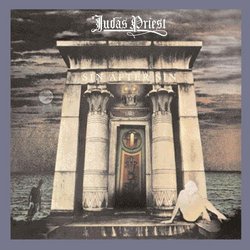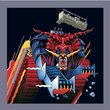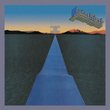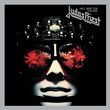| All Artists: Judas Priest Title: Sin After Sin (Exp) Members Wishing: 2 Total Copies: 0 Label: Sony Release Date: 11/6/2001 Album Type: Extra tracks, Original recording remastered Genres: Alternative Rock, Pop, Rock, Classic Rock, Metal Styles: New Wave & Post-Punk, Album-Oriented Rock (AOR), British Metal Number of Discs: 1 SwapaCD Credits: 1 UPC: 696998618329 |
Search - Judas Priest :: Sin After Sin (Exp)
 | Judas Priest Sin After Sin (Exp) Genres: Alternative Rock, Pop, Rock, Classic Rock, Metal
|
Larger Image |
CD DetailsSimilar CDs
|
CD ReviewsPurplish Priest, just before their breakout . . . trebe | 05/30/2010 (4 out of 5 stars) "English heavy metal pioneers Judas Priest, produced a bona fide metal classic with their second album, Sad Wings of Destiny (1976). With songs like Victim of Changes, Tyrant, Genocide, and The Ripper, Sad Wings falls in line chronologically after recordings like Deep Purple's In Rock (1970), Black Sabbath's Paranoid (1970), Purple's Machine Head (1972), and Scorpions' Fly To The Rainbow (1974), as one of the seminal albums, in the fledgling heavy metal genre. Priest vocalist Rob Halford, had elevated the scream from a gratuitous excess, to an art form. And the band's twin lead guitarists, Glenn Tipton and K.K. Downing, were rounding into perhaps the most formidable tandem in metal.
Following up a classic like Sad Wings was not easy, and while a good album with solid songs, Sin After Sin (1977), falls short of the mark established by Sad Wings. The band was now on a major label (Columbia), and featured session drummer Simon Phillips, as a replacement for the departed Alan Moore. With Deep Purple bassist Roger Glover producing, Priest appeared to be in good hands, but Sin After Sin, does not have the same dark vibe, and raw energy and menace of Sad Wings. The production is more polished, but the sound seems a more processed, with heavier bass, and softened guitars, with the leads buried in the mix, at times. With Glover producing, the sound of album probably has more in common with Machine Head, than albums like Stained Class or British Steel, where Judas Priest arguably refined, and defined their sound. The songs are mostly good, with a couple of really outstanding tracks. Last Rose of Summer, an attempt to be poignant, is easily the weakest track. Glover, apparently was a big supporter of the cover of Joan Baez's, Diamonds and Rust. You can give the band some credit for trying something new and "progressive", but ballads are not what Priest is about. Sinner is a great song, but if you compare the album version, to the live version on Unleashed in the East, it is evident that the studio version lacks the ferocious bite, it could have had. Starbreaker is a cool song, but it is played in a really slow groove, with the lead guitars sounding a bit restrained. The band seems to have been turned loose on Side Two (in ye olde vinyl terms), particularly guitarists Downing and Tipton. The band gets out of the gate quickly on Let Us Prey/Call For the Priest, where Phillips is simply smoking on the drums, and the guitars finally play with some speed, incorporating some harmony parts. Raw Deal is not a fast song, but the groove is so dark, heavy, and hypnotic, that it almost captures your soul. Halford's vocal is full of menace and drama, as the song transitions and builds to a crushing operatic crescendo. This is a true metal masterpiece. On Here Come the Tears, the band begins softly and builds to white hot intensity, as capped by a winding guitar solo, Halford explores his vocal range. Bringing things to a close is Dissident Aggressor, which showcases Halford's trademark screaming, and more cranking guitar work. Sin After Sin is a solid album, quite heavy for its time, but the material does not quite measure up to Stained Class (1978), Hell Bent For Leather (1978), or British Steel (1980), the subsequent releases that propelled Judas Priest to the very top of the heavy metal mountain. Glover's production, renders the band, the guitars in particular, sounding a bit subdued." |

 Track Listings (10) - Disc #1
Track Listings (10) - Disc #1


